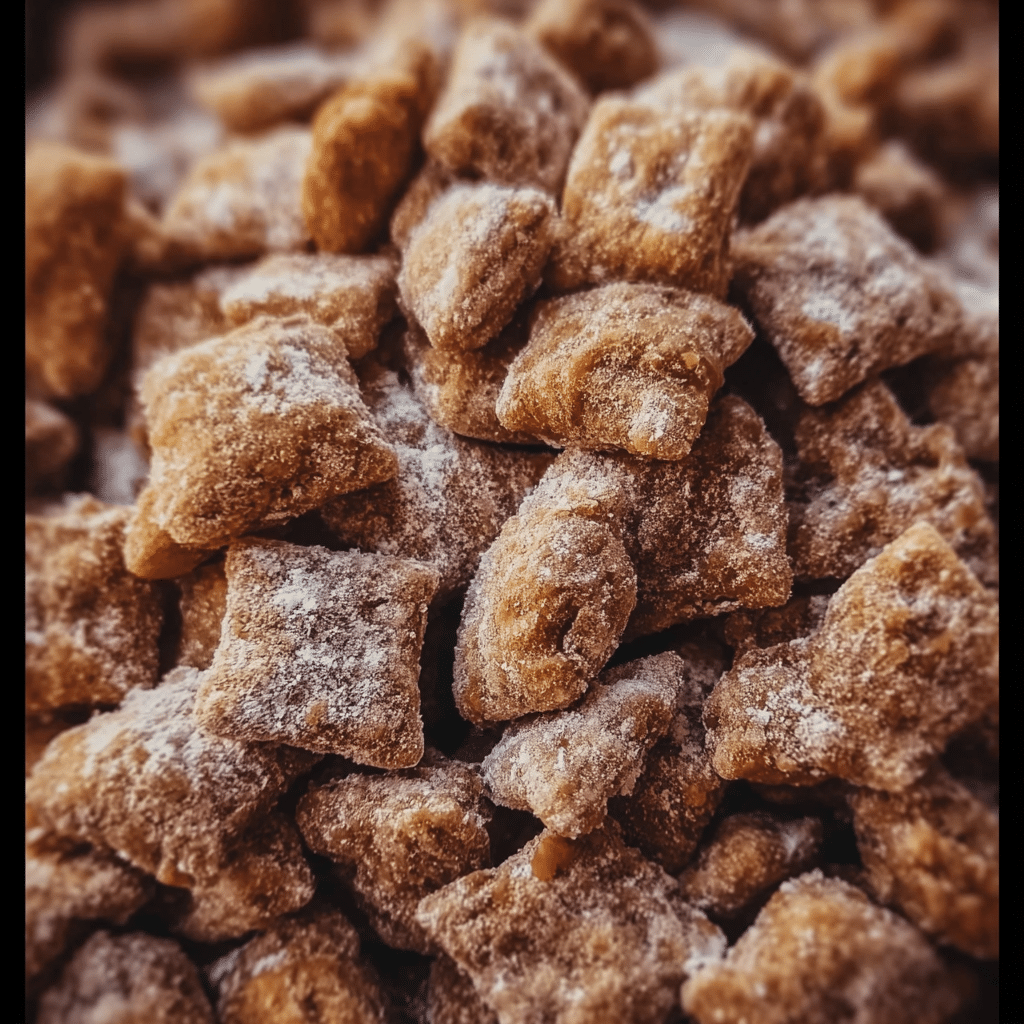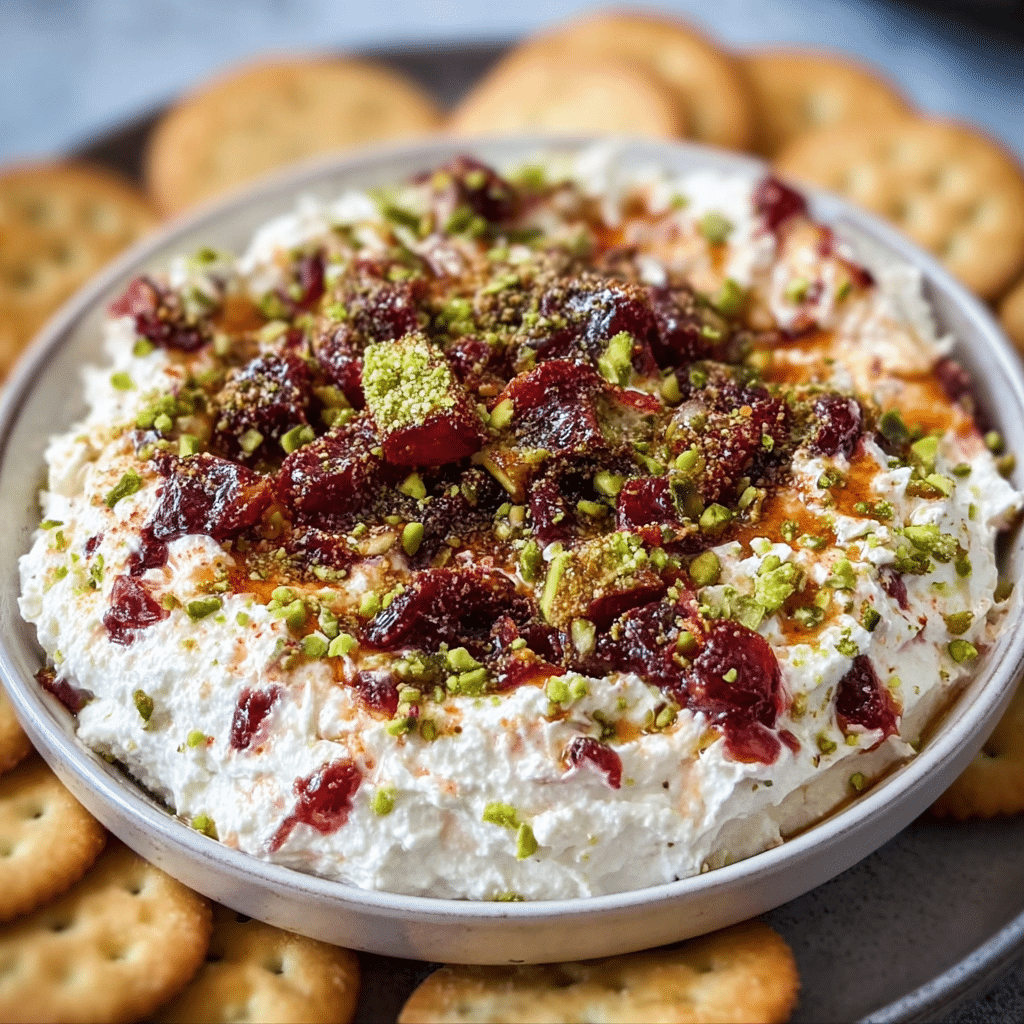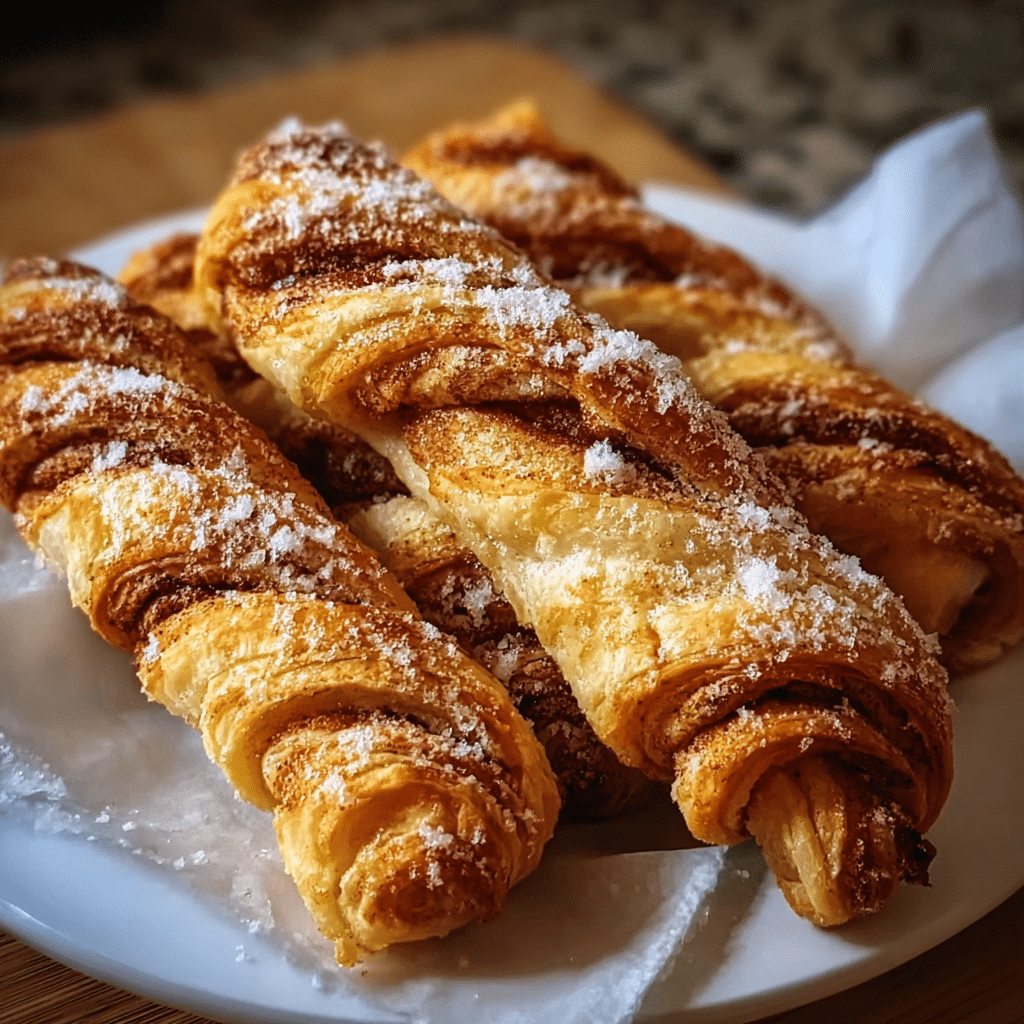Fall harvest pasta has a way of evoking the cozy, colorful, and bountiful spirit of the autumn season. It was during a crisp October afternoon, the leaves dancing to the ground in hues of orange and gold, that I first discovered this delightful dish. I remember standing in my kitchen, the aroma of roasted butternut squash wafting through the air, and feeling an overwhelming sense of nostalgia. My grandmother used to make a similar pasta salad during the harvest season, using whatever fresh produce was available that week. It was a dish that brought our family together, creating a warm atmosphere filled with laughter and delicious flavors.
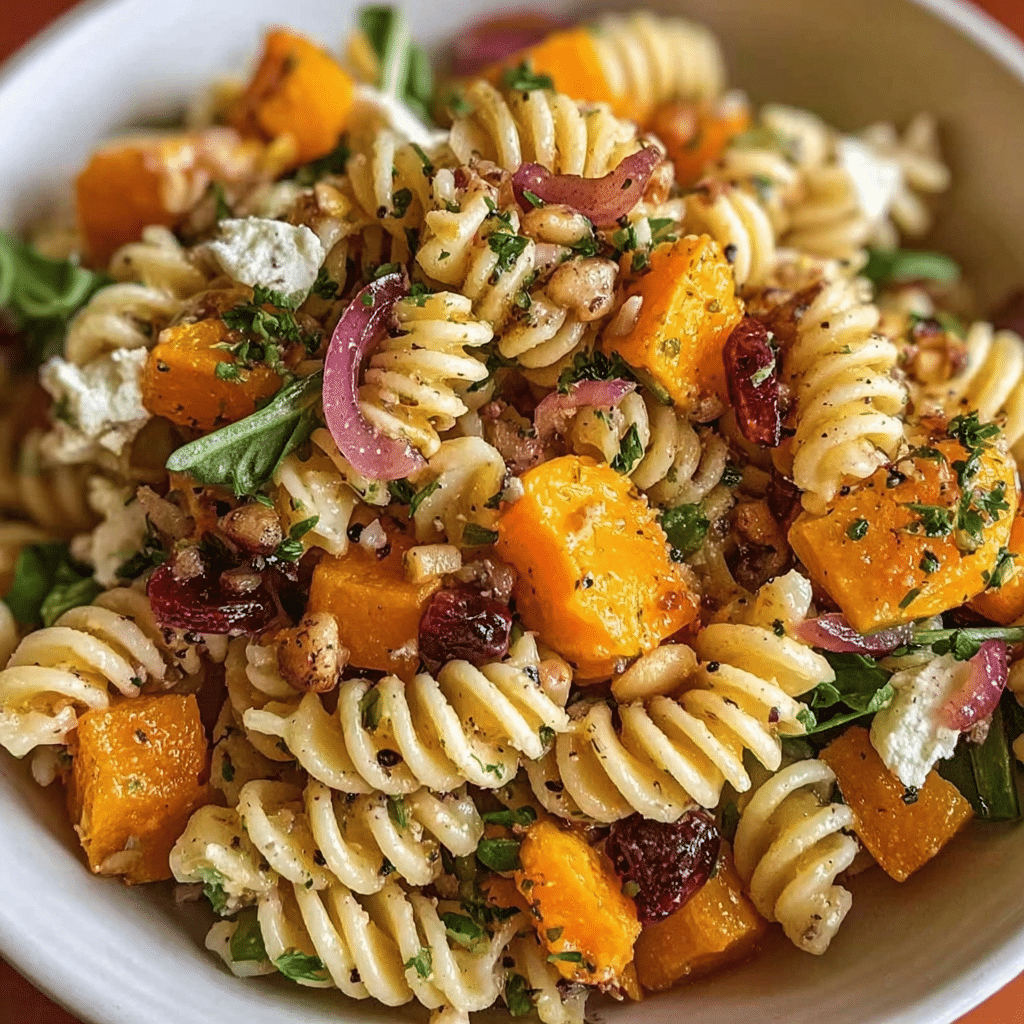
This particular recipe for fall harvest pasta came into my life during a potluck gathering with friends. Each of us was tasked with bringing a dish that represented our favorite season. As I flipped through my recipe book, I stumbled upon my grandmother’s handwritten notes for a pasta salad that was bursting with the flavors of fall—roasted vegetables, tangy cranberries, and creamy goat cheese. As I made it that evening, I couldn’t help but feel a connection to my past, with each ingredient telling a story of the harvest season and the importance of gathering together around the table.
The Story Behind This Recipe
The origins of fall harvest pasta reflect a rich tapestry of seasonal cooking, utilizing what is fresh and vibrant during the autumn months. Traditionally, harvest dishes are a celebration of the bounty of the land, which varies from region to region. In the United States, the concept of a harvest celebration can be traced back to the early agricultural societies that celebrated the end of the growing season with feasts. The fall harvest pasta I make today embodies that spirit, combining various elements that showcase the best produce of the season.
What sets this recipe apart from other pasta salads is its versatility and the emphasis on seasonal ingredients. It’s not just a mix of pasta and vegetables; it’s a canvas for creativity. You can use whatever you have on hand, whether it’s roasted Brussels sprouts, sweet potatoes, or even apples for a hint of sweetness. This adaptability makes it a go-to option for busy families seeking quick dinner solutions without sacrificing flavor or nutrition.
As the leaves begin to change and the weather cools, this dish becomes a staple in my home. It is perfect for those hectic weeknights when the family is busy with school and sports, yet still wanting to gather around the dinner table. The time spent preparing this fall harvest pasta is minimal compared to the joy it brings. You can roast the vegetables ahead of time, cook the pasta in advance, and simply toss everything together when you’re ready to eat. It’s a reminder that even in the chaos of life, there are moments to slow down and enjoy a meal together.
Why You’ll Love This Dish
There’s an emotional connection that comes with every bite of fall harvest pasta. It’s not just about the ingredients; it’s about the memories they evoke. When I serve it to my family, I can see the joy on their faces as they dig into a bowl filled with vibrant colors and rich flavors. The creamy goat cheese melts into the pasta, enhancing each bite, while the sweet and tart cranberries add a delightful contrast. It’s comfort food at its finest, perfect for chilly evenings.
In this guide, I promise you’ll learn not just how to make the ultimate fall harvest pasta, but also the stories behind the ingredients, tips for the best flavor combinations, and ways to customize it to suit your family’s preferences. Whether you’re a seasoned cook or a beginner, this dish is approachable and forgiving. You’ll discover how to make it your own while still celebrating the essence of fall. Join me as we delve into the rich flavors and heartfelt traditions that make this dish a cherished part of my autumnal repertoire.
The Rich History and Cultural Significance of fall harvest pasta
To truly appreciate fall harvest pasta, we must dive deep into its rich history and cultural significance. The concept of using seasonal ingredients in cooking is as old as humanity itself, but pasta salad as we know it has its roots in Italian cuisine. Pasta was introduced to the Americas by Italian immigrants in the late 19th century, and as they settled in various regions, they began to adapt their traditional dishes to include local produce and flavors.
Origins and History
The evolution of pasta salad began in Italy, where the combination of pasta and seasonal vegetables became a popular way to create a quick yet satisfying meal. Traditionally, Italian pasta salads were simple, using just a few ingredients like olive oil, tomatoes, and herbs. However, as the dish traveled across the globe, especially to the United States, it transformed. The idea of incorporating roasted vegetables, nuts, and cheeses into pasta salads took root, reflecting the diverse culinary influences present in American cuisine today.
Fall harvest pasta specifically emerged as a seasonal interpretation, celebrating the bounty of autumn. It takes advantage of hearty vegetables like squash, kale, and root vegetables, which are abundant in this season. The addition of ingredients such as cranberries and nuts not only enhances the flavor profile but also adds texture and visual appeal. Over the years, it has evolved into a dish that symbolizes the gathering of family and friends during the harvest season, embodying the spirit of gratitude and abundance.
Cultural Significance
In various cultures, autumn marks the end of the growing season and the beginning of preparations for winter. Harvest festivals are common across many cultures, where communities come together to celebrate the fruits of their labor. In the United States, Thanksgiving is perhaps the most recognized occasion where family and friends gather to share a meal, often featuring hearty dishes like pumpkin pie, roasted turkey, and, increasingly, fall harvest pasta.
This dish has become a staple at potlucks, holiday gatherings, and family dinners, symbolizing togetherness and the warmth of home-cooked meals. Its versatility means it can be served warm or cold, making it suitable for any occasion—from a summer barbecue to a cozy winter get-together. Notable chefs have embraced this dish, often showcasing it on their menus as a way to highlight seasonal produce and local ingredients, further solidifying its status in modern culinary culture.
Nutritional Benefits
Beyond its cultural significance, fall harvest pasta boasts numerous nutritional benefits. The dish is typically packed with vitamins, minerals, and antioxidants, thanks to the variety of vegetables used. For instance, butternut squash is rich in vitamins A and C, while kale is a powerhouse of nutrients, including calcium, iron, and fiber. The addition of whole grain pasta can increase fiber content, aiding in digestion and providing sustained energy levels.
Moreover, incorporating nuts like walnuts or pecans adds healthy fats, protein, and additional fiber, making this dish not just delicious but also wholesome. The balance of carbohydrates, healthy fats, and a variety of vegetables makes fall harvest pasta a nutritious choice, perfect for families seeking to eat well during busy school nights. Each bite is a reminder of the importance of nourishing our bodies with seasonal, fresh ingredients that celebrate the flavors of the harvest.
Essential Ingredients for Perfect fall harvest pasta
Essential Ingredients for Perfect fall harvest pasta
As the leaves begin to turn and the crisp air settles in, there’s nothing more comforting than a hearty fall harvest pasta. This dish is not only a celebration of the season’s best produce but also a canvas for flavors and textures that come together beautifully. Let’s delve into the essential ingredients that transform this dish into a delightful autumn experience.
Essential Ingredients
- 12 oz dry ditalini rigati pasta (450g) or 6 cups cooked
- 2 cups diced butternut squash (fresh or frozen will both work)
- 2 cups thinly sliced Brussels sprouts
- Salt and black pepper to taste
- 2 tablespoons olive oil (divided)
- 1 lb mild turkey sausage (casing removed)
- 3 heaping cups curly kale leaves (finely chopped, about ½ of a large bunch)
- 1 cup red onion (diced, about ½ of one large red onion)
- 1 cup parmesan cheese (shredded)
- ½ cup dried cranberries
- ½ cup pumpkin seeds
- Maple dijon vinaigrette:
- ½ cup olive oil
- ¼ cup maple syrup
- 3 tablespoons old-fashioned Dijon mustard
- ¼ cup apple cider vinegar
- ¼ teaspoon black pepper
- ½ teaspoon salt
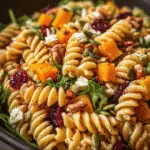
Fall Harvest Pasta Salad
Ingredients
- 12 oz dry ditalini rigati pasta 450g or 6 cups cooked
- 2 cup diced butternut squash fresh or frozen will both work
- 2 cups thinly sliced brussel sprouts
- Salt and black pepper to taste
- 2 tablespoon olive oil divided
- 1 lb mild turkey sausage casing removed
- 3 heaping cups curly kale leaves finely chopped (about ½ of a large bunch)
- 1 cup red onion diced (about ½ of one large red onion)
- 1 cup parmesan cheese shredded
- ½ cup dried cranberries
- ½ cup pumpkin seeds
Maple dijon vinaigrette:
- ½ cup olive oil
- ¼ cup maple syrup
- 3 tablespoon old fashioned dijon mustard
- ¼ cup apple cider vinegar
- ¼ teaspoon black pepper
- ½ teaspoon salt
Instructions
- Preheat oven to 400F and prepare a large sheet pan.
- Cook your pasta according to package instructions. Once cooked, drain and place in the fridge or freezer to allow it to fully cool.
- While the pasta is cooking add the diced butternut squash and sliced brussels sprouts to the pan. Drizzle with 1 tablespoon of olive oil and season with salt and black pepper. Bake for about 25-30 minutes or until the brussel sprouts are crispy and the butternut squash begins to brown. Once cooked, allow to cool.
-
While the veggies are roasting, remove the sausages from the casing by using a sharp knife to gently slice one side of the casing to remove the meat. Cook the turkey sausage until no longer pink in colour. Allow to cool.
-
Add the kale to a large salad bowl, drizzle with the remaining 1 tablespoon of olive oil and gently massage the leaves to soften them.
-
Add the cooled pasta to the kale base. Top with roasted veggies, turkey sausage crumbles, red onion, parmesan cheese, dried cranberries and pumpkin seeds.
-
To make your dressing: add olive oil, maple syrup, dijon mustard, apple cider vinegar, salt and black pepper to a large mason jar and whisk (or shake jar) until fully combined.
-
Drizzle dressing over the salad and toss to combine.
Each ingredient in this fall harvest pasta plays a pivotal role, contributing not only to the flavor but also to the nutritional value of the dish. Let’s explore each component in detail.
The ditalini rigati pasta serves as the hearty base of this pasta salad. This tubular pasta is perfect for holding onto the dressing and other ingredients. When cooking pasta, I always recommend using a large pot of salted water; it should taste like the ocean! This enhances the flavor of the pasta itself.
Butternut squash adds a natural sweetness and a beautiful golden color. Whether you choose to use fresh squash or frozen (which is often pre-cut and easy to prepare), make sure it is firm and free of blemishes. Roasting the squash brings out its caramelized flavor, making it a delightful addition to your fall harvest pasta.
Brussels sprouts are a cruciferous vegetable that adds a slight bitterness, balancing the sweetness of the squash. When selecting Brussels sprouts, look for small, firm, and vibrant green specimens. Slice them thinly for this recipe to ensure they cook evenly and integrate well with the other ingredients.
The olive oil in this recipe, especially when divided, serves multiple purposes: it’s for sautéing, drizzling, and dressing. Opt for high-quality extra virgin olive oil for the best flavor. Quality olive oil should have a rich, fruity aroma. Always check for the harvest date on the bottle for freshness.
Adding mild turkey sausage not only makes this dish heartier but also provides a savory element. When choosing turkey sausage, look for brands that do not include fillers or artificial ingredients. If you prefer, you can substitute it with chicken sausage or even a plant-based sausage for a vegetarian option.
Curly kale is packed with nutrients and adds a delightful crunch to the dish. When shopping for kale, select leaves that are vibrant and crisp, avoiding those that are wilted or brown. Kale can be tough, so finely chopping it helps to soften its texture in the final dish.
Red onion contributes a mild sweetness and a pop of color. When diced, it releases a pungent aroma that mellows when cooked. To reduce the bite, soak diced onions in cold water for a few minutes before adding them to the dish.
Parmesan cheese adds a salty, nutty flavor that enhances the overall dish. Freshly shredded cheese is always preferable, as pre-packaged versions can contain anti-caking agents that affect texture.
Dried cranberries introduce a sweet and tart note, balancing the savory elements of the dish. Look for cranberries that are unsweetened or lightly sweetened to keep the dish from becoming overly sweet.
Pumpkin seeds not only provide a delightful crunch but are also a great source of healthy fats and protein. When purchasing, look for raw or roasted seeds without added salt for a cleaner flavor.
The maple dijon vinaigrette is the perfect finishing touch. The combination of maple syrup, apple cider vinegar, and Dijon mustard creates a tangy-sweet dressing that complements the earthy ingredients beautifully. Use pure maple syrup for the best flavor.
Shopping Tips
When shopping for these ingredients, consider visiting local farmers’ markets for fresh produce. Seasonal availability means that many of these items will be at their peak flavor and nutrition. If you’re purchasing frozen items, ensure that they are free from additives and preservatives.
Substitutions and Alternatives
For those with dietary restrictions, there are plenty of substitution options. For instance, if you’re avoiding gluten, consider using gluten-free pasta. If you prefer a vegetarian option, simply omit the turkey sausage and add more vegetables or legumes for protein. Additionally, you could use nutritional yeast in place of Parmesan for a dairy-free alternative. Always remember, cooking is about improvisation and personal preference, so feel free to experiment!
In conclusion, the beauty of fall harvest pasta lies in its versatility and the array of ingredients that come together harmoniously. By selecting high-quality ingredients and understanding their roles in the dish, you can create a pasta salad that not only showcases the flavors of the season but also nourishes your body and soul.
Detailed Step-by-Step fall harvest pasta Cooking Instructions
Detailed Step-by-Step fall harvest pasta Cooking Instructions
Cooking can be an intimidating process, especially when trying to achieve the perfect fall harvest pasta. However, with a little organization and some culinary know-how, you can create a delightful dish that impresses your family and friends. Let’s walk through the cooking process step by step.
Preparation Steps
- Gather Your Ingredients: Start by assembling all your ingredients on the counter. This step, known as mise en place, ensures you have everything you need at your fingertips, making the cooking process smoother.
- Prep the Vegetables: Dice the butternut squash and red onion, thinly slice the Brussels sprouts, and chop the kale. If using fresh butternut squash, you may need a sharp knife to peel and cube it. For the kale, remove the tough stems and finely chop the leaves to ensure they integrate well into the dish.
- Measure Your Pasta: If you’re using dry ditalini rigati, measure out 12 ounces (or 450 grams). If you prefer to cook fresh pasta, you’ll want about 6 cups cooked. Set a large pot of salted water to boil.
- Create the Vinaigrette: In a small bowl, whisk together the olive oil, maple syrup, Dijon mustard, apple cider vinegar, black pepper, and salt. Taste and adjust seasoning as needed, keeping in mind the sweetness of the maple syrup.
Cooking Process
- Cook the Pasta: Once the water is boiling, add the pasta and cook according to package instructions until al dente. Remember to stir occasionally to prevent sticking. Once cooked, drain the pasta and set it aside, reserving a cup of pasta water.
- Sauté the Turkey Sausage: In a large skillet, heat 1 tablespoon of olive oil over medium heat. Add the turkey sausage, breaking it apart with a wooden spoon. Cook until browned and cooked through, about 5-7 minutes. Remove the sausage from the skillet and set it aside.
- Cook the Vegetables: In the same skillet, add another tablespoon of olive oil. Add the diced butternut squash and sauté for about 5-7 minutes until it begins to soften. Next, add the sliced Brussels sprouts and cook for an additional 4-5 minutes. Finally, add the chopped kale and red onion, cooking until the kale wilts and the onion becomes translucent.
- Combine Ingredients: Return the cooked turkey sausage to the skillet and mix everything together. If the mixture looks dry, add a splash of the reserved pasta water to create a cohesive blend of flavors.
Final Assembly
- Mix in the Pasta: Add the drained pasta to the skillet and toss everything together gently. Be sure to coat the pasta well with the sautéed vegetables and sausage.
- Add Cheese and Cranberries: Stir in the shredded Parmesan cheese and dried cranberries, allowing the cheese to melt slightly and create a creamy texture.
- Add the Vinaigrette: Drizzle the maple Dijon vinaigrette over the pasta mixture and toss everything to combine. The dressing should coat the pasta evenly, creating a beautiful finish to your fall harvest pasta.
- Serve and Enjoy: Once everything is combined, taste and adjust seasoning with salt and pepper as needed. Serve warm or at room temperature. This pasta salad can also be made ahead of time and served chilled, making it a perfect dish for gatherings.
Throughout the cooking process, keep an eye on your timing. The entire dish should take about 30 minutes from start to finish. A great tip is to multitask; while the pasta cooks, prepare the vegetables, and sauté the sausage. This not only saves time but also keeps the flavors fresh and vibrant.
Remember, cooking is as much about the experience as it is about the outcome. Don’t be afraid to experiment with timing and ingredients. Perhaps you want to add some roasted garlic for depth or swap the cranberries for pomegranate seeds for a pop of color. The beauty of fall harvest pasta lies in its adaptability, allowing you to make it your own.
With this detailed guide, you’ll create a fall harvest pasta that will warm your heart and fill your home with delightful aromas. So, gather your loved ones, share this meal, and celebrate the bounty of the season!
Professional Tips and Techniques for fall harvest pasta
When it comes to creating a stunning fall harvest pasta, the right techniques and tips can elevate your dish from ordinary to extraordinary. As the leaves turn and the air cools, this pasta salad can become a centerpiece at your dinner table, gathering family and friends around to celebrate the season. Drawing from my own experiences, I’ve learned that a few professional tips can make all the difference in achieving the perfect fall harvest pasta.
Professional Techniques
One of the foundational techniques in preparing a fall harvest pasta is selecting the right pasta shape. While traditional pasta shapes like penne or fusilli work beautifully, I often opt for farfalle or orecchiette during the fall season. These shapes not only hold onto the dressing and ingredients more effectively but also add an appealing visual element to the dish. Remember to cook pasta al dente; this ensures that it remains firm and doesn’t become mushy when mixed with the other ingredients.
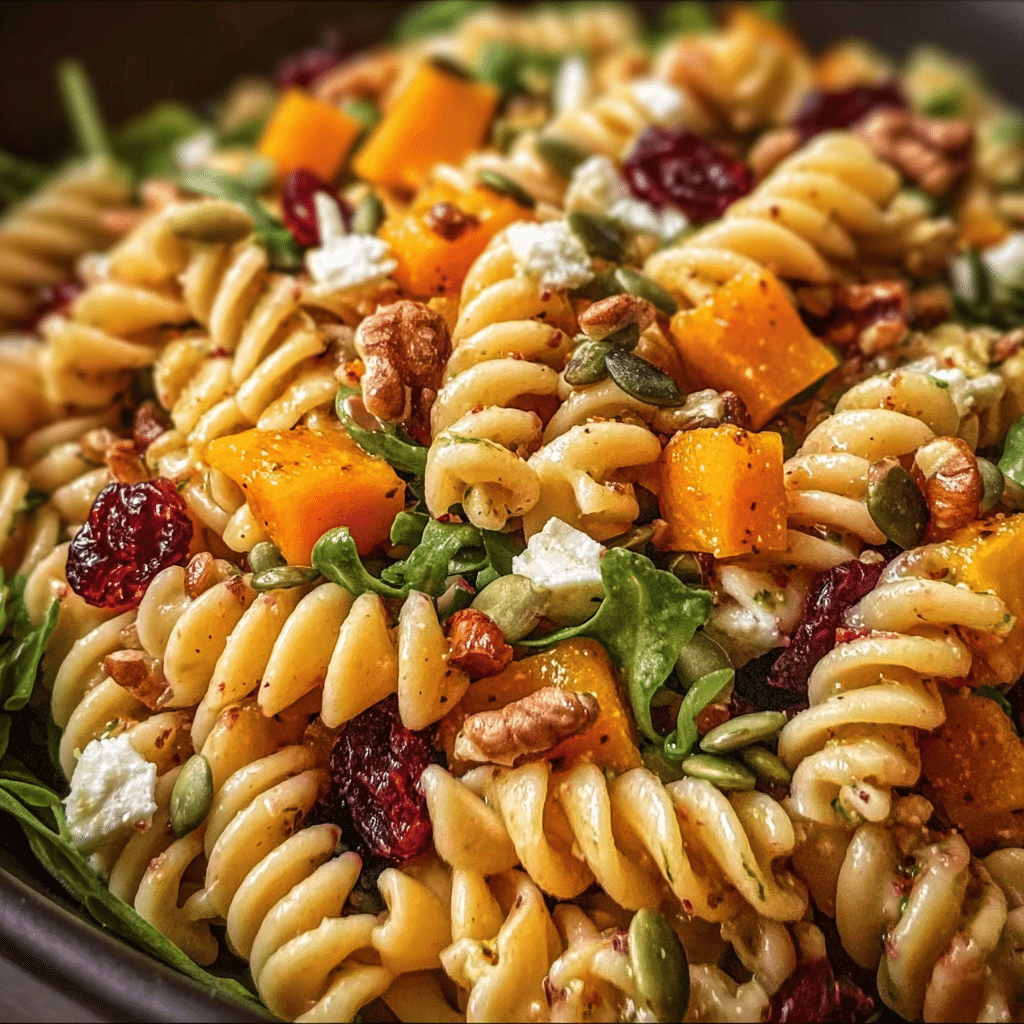
When it comes to the vegetables in your fall harvest pasta, consider roasting them to enhance their natural sweetness. I love to toss butternut squash, Brussels sprouts, and carrots with olive oil, salt, and pepper, then roast them until they’re caramelized. This technique brings out a depth of flavor that raw or steamed vegetables simply cannot match. For an even deeper flavor, try adding a sprinkle of fresh herbs or spices like thyme or rosemary before roasting.
Another insider secret is to incorporate a variety of textures. Adding crunchy nuts, such as toasted walnuts or pecans, not only provides a delightful contrast to the pasta but also boosts the nutritional value of your dish. Combine these with soft ingredients like feta cheese or goat cheese for an impressive balance that keeps each bite interesting.
Troubleshooting Guide
Even the most seasoned cooks encounter issues when preparing a dish. If your pasta salad seems bland, consider adjusting your seasoning. A splash of lemon juice or a drizzle of balsamic vinegar can brighten the flavors significantly. Additionally, if your pasta is sticky, it might be due to overcooking or not using enough water during boiling. Always ensure you have a large pot with plenty of salted water to give the pasta enough room to cook evenly.
For those who might struggle with the textures of the vegetables, remember that cutting them into uniform pieces helps them cook evenly. If you find that your roasted vegetables are unevenly cooked, an easy fix is to stir them halfway through roasting to ensure consistent caramelization. If you have leftovers that seem dry the next day, a little olive oil or dressing can rejuvenate the dish without compromising its flavor.
Presentation Tips
Let’s not forget that we eat with our eyes first! A beautiful presentation will make your fall harvest pasta even more inviting. I recommend serving it in a large, shallow bowl or a rustic wooden platter. This allows the vibrant colors of the vegetables to shine through. For an extra touch, you can sprinkle some freshly chopped parsley or microgreens on top just before serving. This not only adds a pop of color but also freshness to the dish.
When it comes to wine pairing, I suggest a light-bodied red like Pinot Noir or a crisp white such as Sauvignon Blanc. These wines complement the earthy flavors of roasted fall vegetables beautifully, enhancing your overall dining experience. Consider serving the wine slightly chilled, which can make your meal feel even more refreshing, especially on those crisp autumn evenings.
Lastly, if you’re making this fall harvest pasta ahead of time, consider dressing it just before serving. This helps prevent the pasta from absorbing too much of the dressing, which can lead to a dry dish. Always keep your ingredients separate until you’re ready to serve, ensuring that each component maintains its integrity. With these tips and techniques, your fall harvest pasta will not only taste amazing but also look spectacular on your table.
Creative Variations and Adaptations of fall harvest pasta
As the fall season unfolds, it brings a bounty of seasonal ingredients that can transform your fall harvest pasta into a dish that reflects your personal taste and creativity. It’s all about experimenting with flavors and textures to create a meal that not only satisfies but also excites the palate. Drawing from my culinary adventures, I’ve discovered numerous ways to adapt this dish, making it versatile enough to please any crowd.
Seasonal Variations
When thinking about seasonal ingredient swaps, consider incorporating ingredients like roasted beets, sweet potatoes, or even apples. Roasted beets add a stunning pop of color and an earthiness that complements the pasta beautifully. Sweet potatoes, with their natural sweetness, can be cubed and roasted alongside your other vegetables for a comforting addition. I often throw in diced apples for a touch of crispness and sweetness, which pairs wonderfully with tangy cheeses.
Another delicious twist is to introduce different varieties of squash. Acorn squash, with its nutty flavor, can be roasted and diced into the pasta for a heartier bite. The seasonal produce is endless, so feel free to get creative! The beauty of fall harvest pasta lies in its flexibility; you can easily adjust it to reflect the best of the season.
Dietary Adaptations
For those with dietary restrictions, there are countless ways to modify your fall harvest pasta to meet various needs. If you’re looking for a gluten-free option, simply swap traditional pasta for gluten-free varieties made from chickpeas or lentils. These alternatives not only provide a great texture but also pack in additional protein and fiber. For a vegan version, omit any cheese and opt for nutritional yeast instead, which adds a cheesy flavor without the dairy. You can also use a variety of nuts and seeds to provide the creaminess often associated with cheese.
Should you want to spice things up, consider adding crushed red pepper flakes or a dash of chili oil to your dressing. This will create a delightful contrast against the sweetness of the roasted vegetables. Feel free to tailor the spice level according to your taste—this dish can easily accommodate a range of flavor profiles.
Creative Twists
For those who love to fuse international flavors with traditional dishes, consider adding a Mediterranean twist to your fall harvest pasta. Incorporate ingredients like sun-dried tomatoes, olives, and artichoke hearts for a flavorful blend that transports your dish to a sun-soaked Mediterranean coast. Alternatively, go Asian-inspired by tossing in sesame oil, ginger, and edamame for a refreshing and unique take.
If you find yourself with leftovers, don’t let them go to waste! Transform your fall harvest pasta into a delightful frittata. Simply mix the leftovers with beaten eggs and bake them in a skillet until set. This not only reduces food waste but also creates a whole new meal, showcasing the versatility of your initial dish.
Lastly, consider different cooking methods. While a traditional stovetop method is common, you can also try baking your fall harvest pasta in a casserole dish with a sprinkle of cheese on top for a comforting baked pasta dish. Slow cookers can also be a great option for those busy days; just set it up in the morning and come home to a warm, ready meal.
With these creative variations and adaptations, your fall harvest pasta can continuously evolve, keeping your meals exciting and fresh throughout the season. Embrace the bounty of autumn, and let your culinary creativity shine as you share this delightful dish with loved ones.
Storage, Reheating, and Meal Prep for fall harvest pasta
As the days grow shorter and the air turns crisp, there’s something truly magical about fall harvest pasta. This dish not only celebrates the bounty of the season, but it also lends itself beautifully to meal prep and storage, making it a versatile option for busy weeknights or festive gatherings. In this section, we’ll dive deeply into the best storage methods, reheating techniques, and meal prep strategies to ensure your fall harvest pasta remains delicious and safe to eat.
Short-term Storage
When it comes to storing your fall harvest pasta, the first step is to consider how long you plan to keep it. If you anticipate enjoying your pasta salad within a few days, the refrigerator is your best bet. Start by allowing the pasta to cool to room temperature. This is a crucial step, as placing hot food directly into the fridge can raise the overall temperature and potentially lead to food safety issues.
Once cooled, transfer your fall harvest pasta into airtight containers. I personally love using glass containers because they don’t retain odors and can easily go from fridge to microwave. If you’re planning on mixing in a dressing, consider storing it separately to prevent the pasta from becoming soggy. A good rule of thumb is that properly stored pasta salad can last in the fridge for about 3 to 5 days.
For optimal organization, label your containers with the date you prepared the dish. This simple practice helps you keep track of freshness and reduces food waste. If you find you have leftovers after a gathering, don’t fret! Your fall harvest pasta is a great dish to have on hand for quick lunches or dinners.
Freezing and Long-term Storage
If you want to extend the life of your fall harvest pasta, freezing can be an excellent option. However, it’s important to note that not all pasta salads freeze well due to the ingredients involved. Creamy dressings and delicate vegetables may not hold up after thawing, so it’s best to freeze the pasta itself without the dressing or any fresh toppings.
To freeze your fall harvest pasta, start by portioning it into individual servings. This way, you can thaw just what you need without defrosting the entire batch. Use freezer-safe bags or containers, ensuring to squeeze out as much air as possible to prevent freezer burn. I often double-bag my pasta in freezer bags to provide an extra layer of protection.
When properly stored, your fall harvest pasta can last in the freezer for about 2 to 3 months. To thaw, simply transfer the desired portion to the refrigerator the night before you plan to eat it. For a quicker method, you can also run the sealed bag under cold water until it’s defrosted. Once thawed, enjoy your pasta cold or reheat it with your favorite dressing or a splash of olive oil.
Reheating Best Practices
Reheating fall harvest pasta can be a bit tricky, especially if you’ve included delicate ingredients like roasted squash or fresh herbs. The key to maintaining quality is to reheat gently. If you’re using the microwave, place your pasta in a microwave-safe dish and cover it with a damp paper towel. This helps to create steam, preventing the pasta from drying out. Heat it in short intervals, stirring in between to ensure even warming.
Alternatively, you can reheat your fall harvest pasta on the stovetop. Place it in a skillet over low heat, adding a splash of broth or water to keep it moist. Stir occasionally until heated through. This method not only warms the pasta but can also enhance the flavors as the ingredients meld together again.
For meal prep enthusiasts like myself, batch cooking is a game changer. Preparing large quantities of fall harvest pasta allows you to enjoy it throughout the week. I often double or triple my recipes, storing different portions in the fridge and freezer. It’s a lifesaver during busy weeks when time is tight, yet I want to ensure my family enjoys wholesome, home-cooked meals.
Food safety is paramount when it comes to storing any dish, including fall harvest pasta. Always ensure your containers are clean and dry before use, and remember to consume your stored pasta within the recommended time frames. If you notice any off smells or unusual textures, it’s best to err on the side of caution and discard the dish.
In summary, whether you’re storing your fall harvest pasta for a few days or freezing it for future meals, following these guidelines will help you enjoy this seasonal favorite at its best. With a little planning and care, your pasta salad can be a delightful staple throughout the autumn months.
Nutritional Benefits and Health Information
As we embrace the flavors of fall, it’s important to consider not just the deliciousness of a dish like fall harvest pasta, but also its nutritional benefits. This vibrant pasta salad is not only a celebration of seasonal produce but also a powerhouse of nutrients that can contribute to a balanced diet. Let’s take a closer look at the nutritional breakdown and health benefits of this delightful dish.
Nutritional Profile
A typical serving of fall harvest pasta can provide a wealth of nutrients, depending on the specific ingredients you choose. Generally, you can expect a serving to contain a balance of carbohydrates, fats, and proteins, as well as a range of vitamins and minerals. For example, a serving might contain around 300-400 calories, making it a satisfying option for lunch or dinner.
The base of your fall harvest pasta is usually whole grain pasta, which is higher in fiber than its refined counterparts. This fiber content aids in digestion and can help you feel full longer. Adding seasonal vegetables such as butternut squash, Brussels sprouts, or kale not only enhances the flavor but also boosts the vitamin A, C, and K content of the dish.
In terms of macronutrients, a well-balanced fall harvest pasta can provide approximately 10-15 grams of protein, depending on the addition of proteins like beans, cheese, or nuts. Healthy fats from ingredients like olive oil or avocado can also contribute to a balanced meal, offering essential fatty acids that support heart health.
Health Benefits
One of the standout features of fall harvest pasta is its incorporation of nutrient-dense ingredients. For instance, butternut squash is rich in beta-carotene, which the body converts into vitamin A, supporting eye health and immune function. Additionally, Brussels sprouts are a cruciferous vegetable, known for their cancer-fighting properties and high levels of antioxidants.
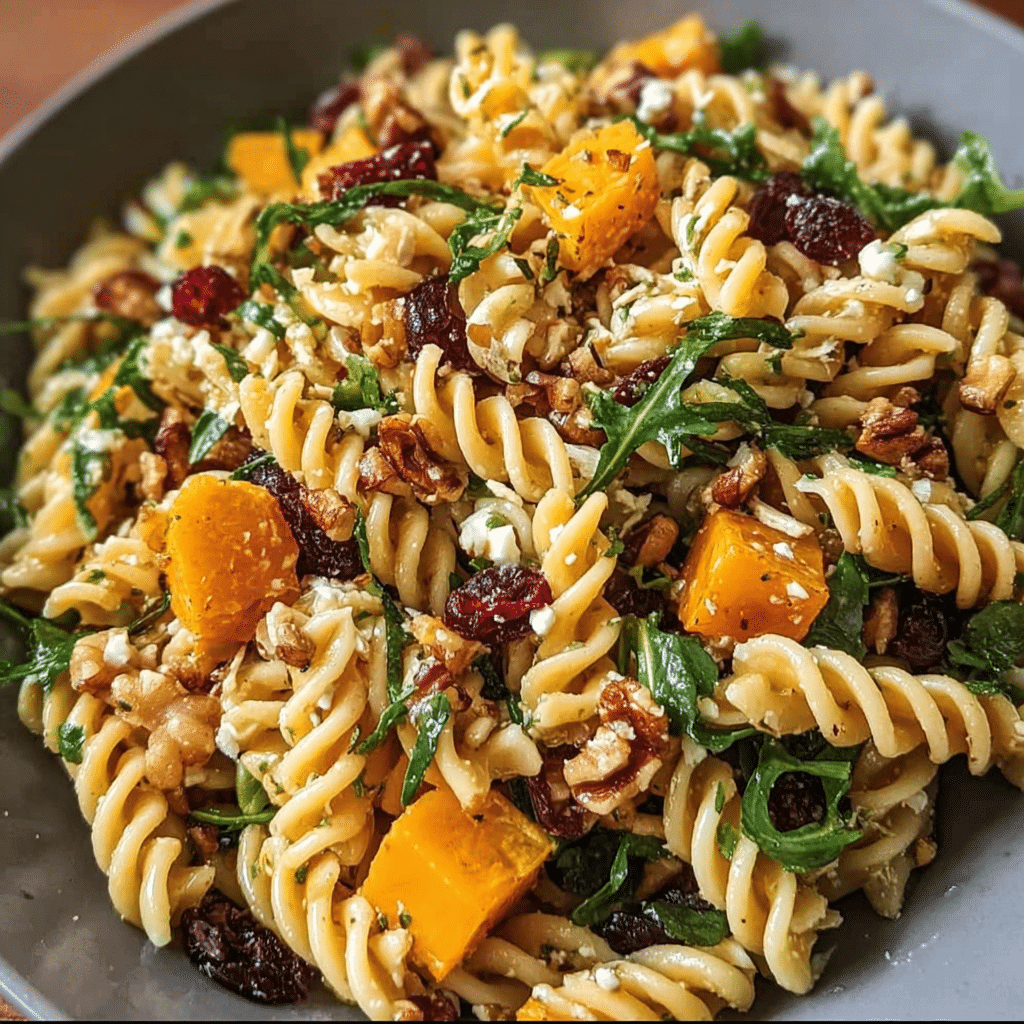
Furthermore, the inclusion of leafy greens like spinach or kale provides a significant amount of iron and calcium, essential for maintaining strong bones and healthy blood. The diversity of ingredients in fall harvest pasta creates a symphony of flavors while delivering a wide array of health benefits.
Dietary Considerations
For those with specific dietary needs, fall harvest pasta can easily be adapted. If you’re following a gluten-free diet, there are numerous gluten-free pasta options available that can serve as an excellent substitute. Additionally, for vegan diets, you can omit cheese or use plant-based alternatives, ensuring everyone at the table can enjoy this seasonal dish.
In terms of allergens, be mindful of the ingredients you choose. Common allergens such as nuts or dairy can be excluded or substituted to create a dish that fits your dietary restrictions. Always check the labels of store-bought dressings or pasta for hidden allergens as well.
For those counting calories or macronutrients, fall harvest pasta can fit into various diet plans. Its balance of carbs, protein, and fats makes it suitable for Mediterranean, vegetarian, and even some low-carb diets, depending on your choices. To modify the recipe for lower calorie options, consider using less pasta and incorporating more vegetables, or using a lighter dressing made from lemon juice and olive oil.
Comparing fall harvest pasta to similar dishes, it often stands out due to its seasonal ingredients and health-conscious profile. Traditional pasta salads might rely heavily on creamy dressings and fewer vegetables, while the fall harvest variety embraces the flavors of the season with a focus on wholesome ingredients. This not only enhances the taste but also increases its nutritional value significantly.
In conclusion, the nutritional benefits of fall harvest pasta make it a fantastic choice for those looking to enjoy a healthy, seasonal meal. With its balance of flavors, colors, and nutrients, this pasta salad is more than just a dish; it’s an experience that nourishes the body and soul, embodying the essence of autumn in every bite.
Frequently Asked Questions About Fall Harvest Pasta
Fall harvest pasta salad recipe
A fall harvest pasta salad is a delightful combination of seasonal ingredients that showcases the flavors of autumn. To make this salad, start by cooking your choice of pasta—such as farfalle or penne—until al dente. While the pasta is cooking, roast seasonal vegetables like butternut squash, Brussels sprouts, and carrots with olive oil and your favorite herbs for added depth. Once everything is combined, toss the pasta with the roasted vegetables, add some nuts like walnuts or pecans for crunch, and finish with a sprinkle of fresh herbs. This dish can be served warm or chilled, making it versatile for any occasion.
Fall harvest pasta salad with feta
Adding feta cheese to your fall harvest pasta salad enhances the flavor profile with its creamy, tangy notes, complementing the sweetness of roasted vegetables. To incorporate feta, crumble it over the salad just before serving to maintain its texture. You can also marinate the feta in olive oil, lemon juice, and herbs beforehand for an extra burst of flavor. Make sure to balance the feta with ingredients like spinach or arugula, which provide a fresh contrast. Remember to adjust the seasoning to accommodate the saltiness of the feta for a harmonious taste.
Fall harvest pasta salad ingredients
The ingredients for a fall harvest pasta salad typically include pasta, seasonal vegetables, nuts, cheese, and a dressing. Common vegetables are roasted butternut squash, sweet potatoes, kale, or Brussels sprouts, which add seasonal flair and nutrients. Nuts like walnuts or pecans contribute a satisfying crunch, while ingredients like cranberries or pomegranate seeds can add a sweet-tart flavor. You can also include cheese options such as feta or goat cheese for added creaminess. Don’t forget to season with salt, pepper, and your choice of herbs for a well-rounded dish.
Fall harvest pasta salad dressing
The dressing for a fall harvest pasta salad can be as simple or complex as you prefer, but a vinaigrette works beautifully to tie all the flavors together. A classic option is a mix of olive oil, apple cider vinegar, Dijon mustard, and honey, which complements the earthiness of the vegetables. For a creamier dressing, consider a yogurt-based or tahini dressing with garlic and lemon juice. Always taste your dressing before mixing it into the salad to ensure it balances the flavors of the ingredients. Drizzle the dressing over the salad just before serving to keep the pasta and veggies fresh.
Fall harvest pasta salad balsamic
Using balsamic vinegar in your fall harvest pasta salad dressing can add a rich, slightly sweet flavor that pairs wonderfully with roasted vegetables. For a simple balsamic dressing, mix balsamic vinegar with olive oil, a touch of maple syrup for sweetness, and season with salt and pepper. This combination enhances the natural sweetness of seasonal ingredients like squash and carrots. When using balsamic vinegar, consider incorporating ingredients like goat cheese or walnuts, which complement its flavor profile beautifully. Toss the salad gently to ensure the dressing is evenly distributed without breaking any of the ingredients.
Fall pasta salad with butternut squash
Butternut squash is a star ingredient in fall pasta salads due to its sweet flavor and creamy texture when roasted. To prepare it, peel and cube the squash, then roast it with olive oil, salt, and pepper until tender and caramelized. Combine the roasted squash with cooked pasta, spinach, and other seasonal vegetables for a hearty salad. Adding ingredients like dried cranberries or feta can provide a delightful contrast to the squash’s sweetness. Serve the salad warm for a comforting dish or chilled for a refreshing option at gatherings.
Best fall pasta salad
The best fall pasta salad is one that balances flavors, textures, and seasonal ingredients. Start with a sturdy pasta like whole wheat or rotini that holds up well to hearty ingredients. Include a mix of roasted vegetables such as squash, beets, and Brussels sprouts, along with nuts for crunch and cheese for creaminess. A well-crafted dressing—whether vinaigrette or creamy—will enhance the overall flavor, so aim for a blend that brings together sweet and savory notes. Don’t forget to add fresh herbs like sage or thyme to elevate the dish and provide that unmistakable autumn aroma.
Fall pasta salad dressing
A good fall pasta salad dressing should complement the hearty ingredients while enhancing the overall flavor. A popular choice is a maple balsamic vinaigrette, which combines the sweetness of maple syrup with the tangy richness of balsamic vinegar and olive oil. Alternatively, a creamy dressing made from Greek yogurt, garlic, and lemon juice can add a refreshing twist. When preparing your dressing, always taste and adjust the seasoning to ensure it works well with the salad’s ingredients. Consider serving the dressing on the side if you’re preparing the salad ahead of time to keep it fresh until serving.
Conclusion: Mastering the Perfect fall harvest pasta
Creating the perfect fall harvest pasta is more than just following a recipe—it’s about understanding the techniques, ingredients, and cultural significance behind this beloved dish. Throughout this comprehensive guide, we’ve explored everything from the historical origins to modern variations, ensuring you have all the knowledge needed to make this recipe your own.
Whether you’re a beginner cook or an experienced chef, the techniques and tips we’ve shared will help you create a fall harvest pasta that’s not only delicious but also meaningful. Remember that cooking is a journey of discovery, and each time you make this dish, you’ll learn something new.
We encourage you to experiment with the variations we’ve discussed, adapt the recipe to your dietary needs, and most importantly, share it with the people you love. Food has the incredible power to bring people together, and Fall Harvest Pasta Salad is the perfect dish to create lasting memories around your dinner table.


